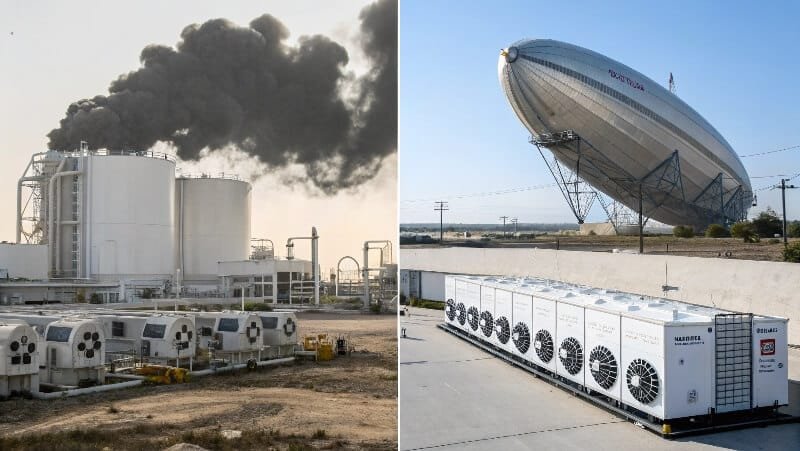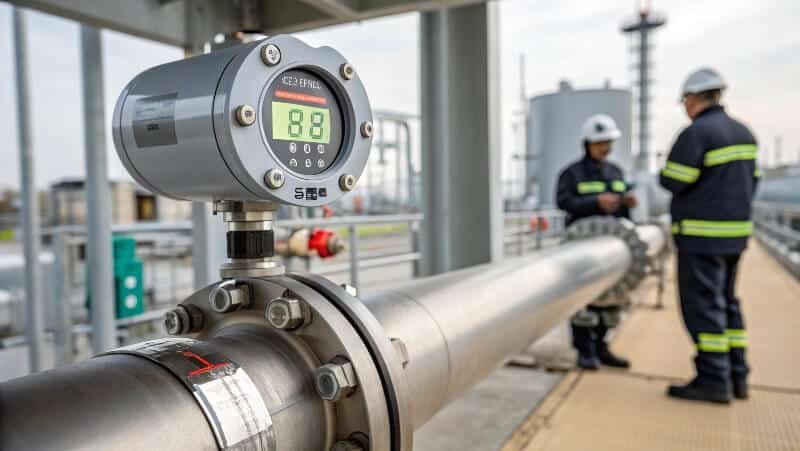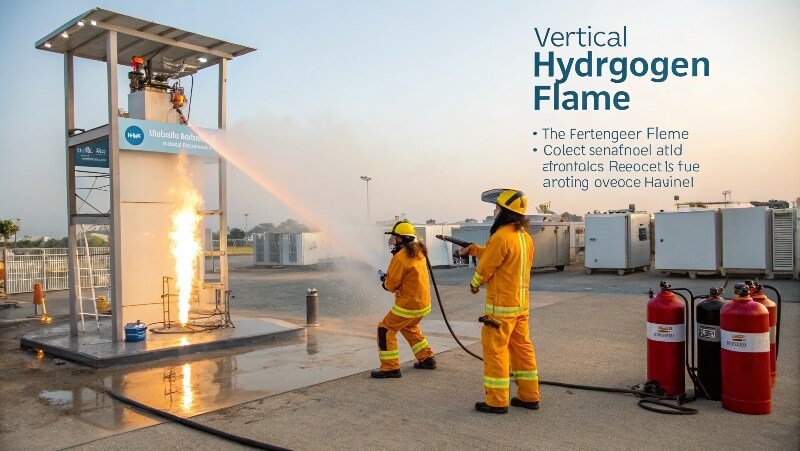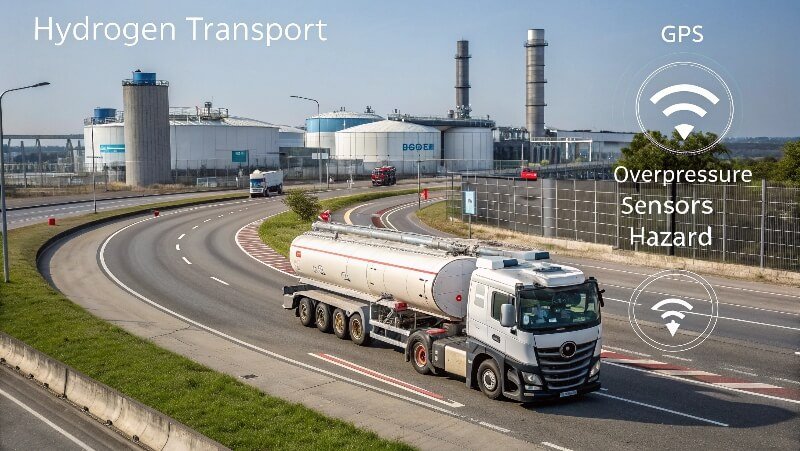In the context of a global energy transition, hydrogen energy has emerged as a key strategic solution to achieving carbon neutrality. Its advantages—zero carbon emissions, high energy density, and renewability—have made it increasingly prominent in modern energy systems.
From the commercialization of proton exchange membrane fuel cell vehicles to grid-connected large-scale hydrogen storage power plants, the hydrogen industry is driving transformative innovation across the energy sector.
However, a persistent public stereotype—that “hydrogen is extremely dangerous”—has become a major barrier to the industrialization of hydrogen technologies.
This misconception largely stems from a lack of understanding of hydrogen’s physical and chemical properties and limited awareness of modern safety systems.

This article aims to provide a rational analysis of the five most common misconceptions about hydrogen safety, offering clarity and promoting the healthy development of the hydrogen industry.
Misconception 1: Hydrogen is explosive and ignites easily
Many people regard hydrogen as a "ticking time bomb," imagining it can explode with the slightest spark. This belief likely comes from chemistry class experiments or the infamous Hindenburg airship disaster.
It’s true that hydrogen is a flammable gas, with an explosion range of 4.0% to 75.6% (by volume)—much wider than natural gas, which ranges from 5.3% to 15%. However, reaching this concentration in real-world scenarios is not easy.
Hydrogen is extremely light—only 1/14th the density of air—and rapidly disperses upward once leaked.

Studies show that under identical leak conditions, the flammable concentration duration of hydrogen in open environments is only one-tenth that of natural gas.
In well-ventilated spaces, such as outdoor hydrogen refueling stations or open-air hydrogen storage areas, hydrogen rarely accumulates to explosive levels.
For example, outdoor hydrogen storage facilities are designed with robust ventilation systems. Combined with hydrogen’s natural dispersal behavior, the risk of dangerous accumulation is extremely low.
Moreover, hydrogen’s explosive energy per unit volume is significantly lower than other fuels—only 1/22nd that of gasoline vapor. Even in the rare case of an explosion, the resulting damage is much smaller compared to traditional fuels.
In a 2019 lab safety test simulating a hydrogen leak explosion, the impact range of hydrogen’s shockwave and thermal radiation was much smaller than that of an equivalent amount of gasoline vapor.
Misconception 2: Hydrogen leaks are undetectable
Because hydrogen is colorless and odorless, many people worry that leaks can’t be detected, potentially leading to disasters.
It’s true that humans can’t see or smell hydrogen, but modern technology provides reliable detection solutions.
Advanced hydrogen detectors are now widely deployed, capable of detecting even trace amounts of hydrogen quickly and accurately.

These detectors are based on various principles, including:
- Catalytic combustion: hydrogen reacts on a sensor surface, producing heat that’s converted into an electrical signal.
- Electrochemical sensors: hydrogen triggers a current change via chemical reactions at the electrode.
- Infrared absorption: hydrogen’s absorption of specific infrared wavelengths is used to gauge its concentration.
Detectors are strategically placed at key points in hydrogen systems—such as valves and pipeline joints—where leaks are most likely.
Safety regulations require that these detectors be regularly calibrated and maintained. For example, in China, hydrogen refueling station standards mandate semi-annual calibration and annual full maintenance of each hydrogen detector.
Some high-end models even feature self-diagnostic functions, issuing alerts when faults are detected—ensuring continuous safety oversight.
Misconception 3: Hydrogen flames are uncontrollable
Some people fear that hydrogen flames are like wildfires—once ignited, they’re impossible to control. This view ignores the unique characteristics of hydrogen combustion.
Hydrogen does burn quickly, with a flame speed of 2.8 m/s, about 7 times faster than natural gas. However, hydrogen flames mostly propagate upward. In open areas, they don’t spread sideways easily, reducing the risk of large-scale burns.
Importantly, hydrogen burns cleanly, producing only water. Unlike fossil fuels, it creates no smoke, ash, or toxic pollutants, making firefighting and cleanup much simpler.

Dedicated firefighting strategies have been developed to address hydrogen’s specific behavior. Fire departments now use specialized tools and agents—such as dry powder or CO₂ extinguishers—to isolate air and lower temperatures effectively.
In addition, water mist systems have been developed. These spray fine water droplets at high speeds, cooling flames and diluting hydrogen concentrations to prevent fire spread.
Countries around the world conduct hydrogen fire response drills, involving fire departments, hydrogen companies, and research institutions. These exercises simulate various scenarios to continuously improve emergency response plans and keep people and infrastructure safe.
Misconception 4: Hydrogen storage and transport are extremely risky
When people think of hydrogen storage or transport, they often imagine dangerous situations—like trucks carrying hydrogen as “moving bombs” or tanks that could explode at any moment.
In reality, hydrogen storage and transport have become much safer thanks to technological progress.

Storage
Modern high-pressure hydrogen tanks are built with advanced materials—such as carbon fiber-wrapped aluminum alloy liners—that withstand pressures up to 70 MPa and offer excellent sealing to prevent leaks.
These tanks undergo rigorous testing:
- Pressure cycling: 5,000+ cycles from 0–70 MPa
- Fatigue testing
- Bullet impact testing
Even in extreme scenarios like gunfire, these tanks do not explode—they release hydrogen slowly and safely.
Transport
Hydrogen is transported via pipelines and specialized trucks, both of which follow strict safety standards.
Pipelines use seamless high-strength steel with treated inner walls to prevent hydrogen embrittlement. They’re equipped with pressure sensors and leak detectors to ensure quick response to anomalies.
Transport vehicles come with multiple safety features—over-temperature alarms, overpressure valves, and automatic shutoff systems. If an abnormal event occurs, the system will:
- Cut off hydrogen supply
- Trigger automatic pressure release
Additionally, these vehicles are fitted with GPS tracking and remote monitoring systems, allowing companies and regulators to monitor routes and conditions in real time.
Misconception 5: The entire hydrogen industry chain is dangerous
Some believe that every stage of the hydrogen value chain—production, storage, transport, and usage—is inherently risky. This view is overly simplistic.
In fact, the industry has developed comprehensive safety standards and protocols at each stage.
Production
For example, in water electrolysis plants, companies use advanced alkaline or PEM electrolyzers to closely monitor production variables—voltage, current, temperature, pressure—to ensure product purity and minimize leak risks.
Some facilities even feature hydrogen recycling systems to capture and reuse leaked gas.

Storage & Transport
As detailed above, modern equipment and procedures ensure high levels of safety during storage and distribution.
Usage
Whether in industrial or consumer applications, only certified personnel are allowed to handle hydrogen systems. Staff at hydrogen refueling stations must:
- Undergo special training
- Pass certification exams
- Follow strict operating procedures
Hydrogen infrastructure is also subject to regular inspections and surprise audits by safety authorities to detect and eliminate potential hazards.
China, for instance, has built a comprehensive hydrogen safety supervision framework, covering the entire value chain with:
- Detailed technical standards
- Scheduled evaluations
- Random safety inspections
Conclusion
In summary, hydrogen is not as dangerous as commonly believed.
With scientific understanding, advanced technology, and strict safety management, hydrogen can be safely and reliably used in modern energy systems.
As public misconceptions fade, and as technologies improve and costs fall, hydrogen is set to play an increasingly vital role in global energy transition and the path toward carbon neutrality.



